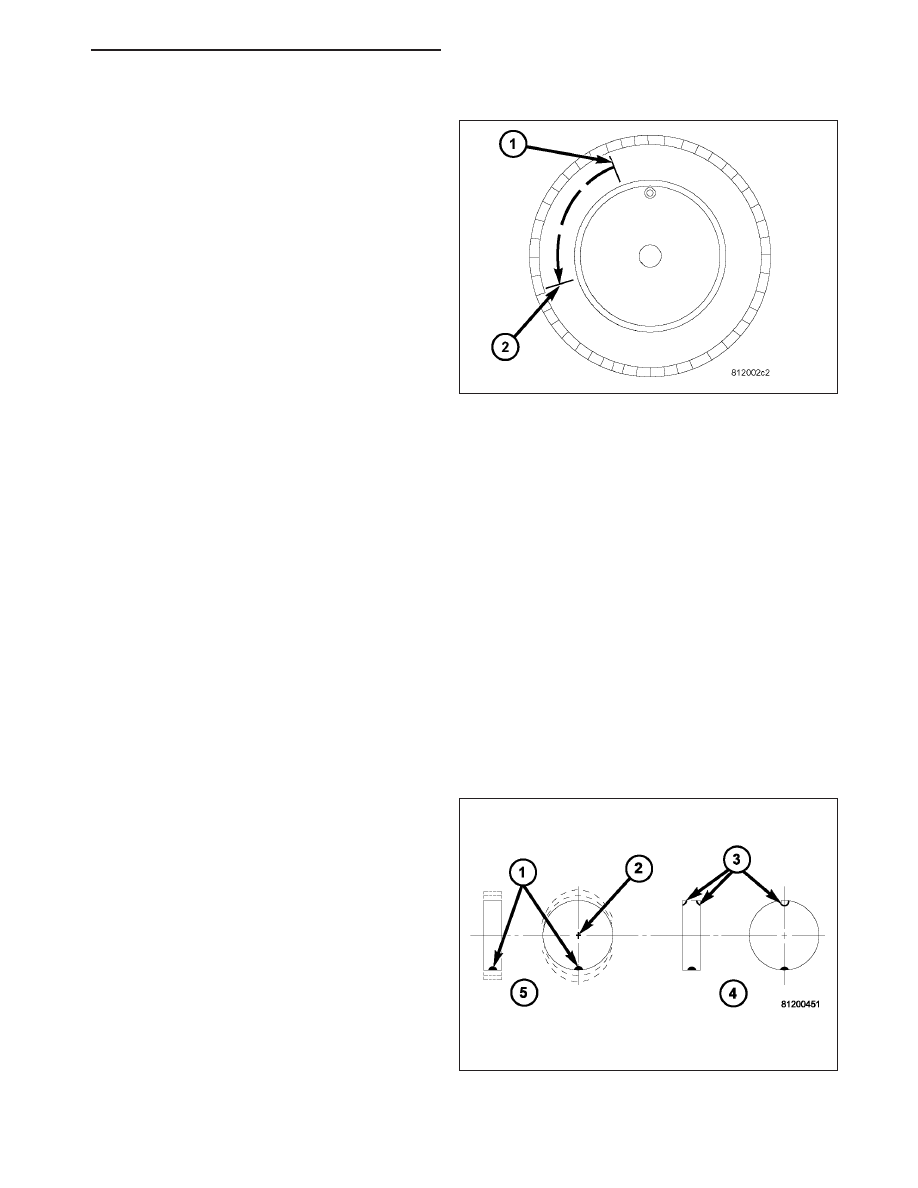Content .. 1306 1307 1308 1309 ..
Dodge Caliber. Manual - part 1308

•
If the new high spot is NOT within 102 mm (4.0 inch) of either high spot, draw an arrow on the tread from new
high spot toward the original (2). Break down the
tire and remount it 90 degrees on rim in that
direction, then re-measure runout. This will nor-
mally
reduce
the
runout
to
an
acceptable
amount.
6. Once back together, road test the vehicle for at least 5 miles, following the format described in Road Test. If
vibration persists, and all components tested are within specification, the tires may have an excessive radial
force condition. Radial force variation can be checked using a wheel balancer capable of measuring radial force
variation, such as the Hunter GSP 9700 Vibration Control System (Wheel Balancer) or equivalent. If this equip-
ment is not available, consult with the tire manufacturer.
STANDARD PROCEDURE
TIRE AND WHEEL BALANCE
NOTE: Balance equipment must be calibrated and maintained per equipment manufacturer’s specifications.
Wheel balancing can be accomplished with either on-vehicle or off-vehicle equipment.
NOTE: If using on-vehicle balancing equipment, on the driving axle, remove the opposite wheel and tire
assembly.
It is recommended that a two-plane dynamic balancer be used when a tire and wheel assembly requires balancing.
A static balancer should only be used when a two-plane balancer is not available.
Balance wheel and tire assemblies dynamically and statically to less than 0.25 (
1
⁄
4
) ounce.
For static balancing, find the location of the heavy
spot causing the imbalance (1). Counter balance the
wheel directly opposite the heavy spot. Determine
weight required to counterbalance the area of imbal-
ance. Place half of this weight on the inner rim flange
and the other half on the outer rim flange (3) at the
predetermined spots.
PM
TIRES/WHEELS - SERVICE INFORMATION
22 - 59